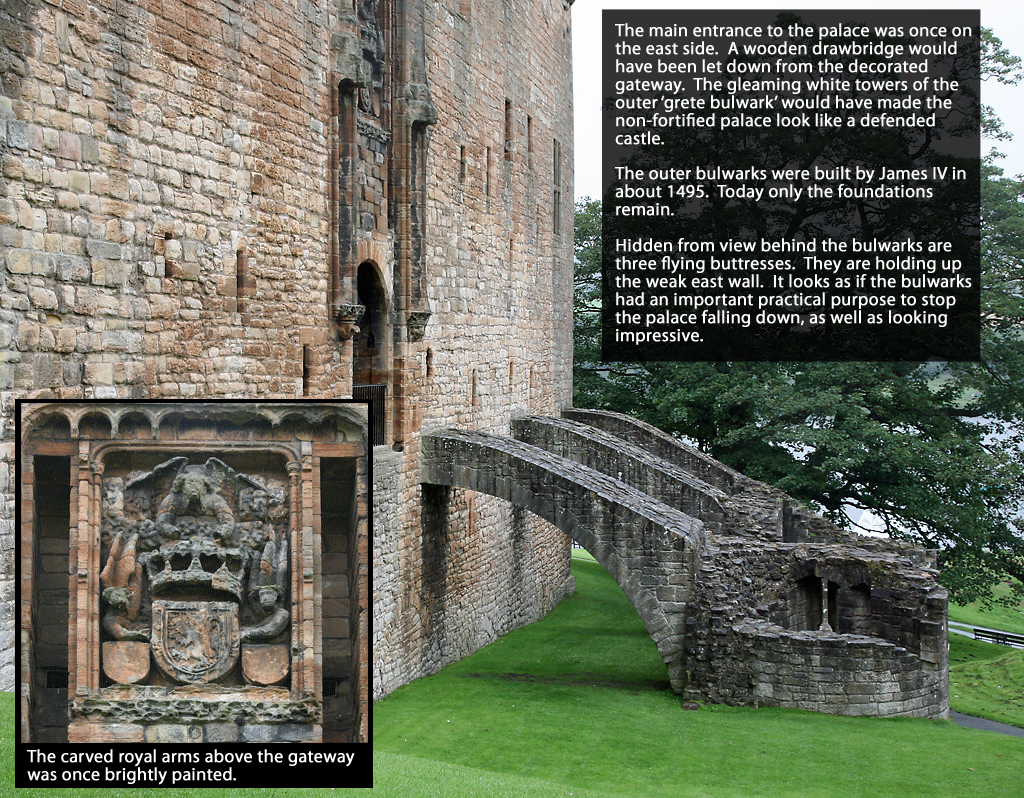 Bulwarks made the palace look like a defended castle but they hid buttresses holding up the walls. |
Great BulwarksLocation: Exterior
Description:
The main entrance to Linlithgow palace was once on the east side. A wooden drawbridge would have been let down from the decorated entrance gate.
James I had the entrance gate built in about 1430. The tall niches on either side once held statues. Above the gate is the royal arms held up by two angels. Another angel flies above. All of this carved stone was once painted with bright colours. The two long, vertical slots held the wooden gaffs (beams) from which the drawbridge was suspended by chains. The gleaming white towers of the outer ‘grete bulwark’ made the non-fortified palace look like a defended castle. The outer bulwarks were added by James IV in about 1495. Today only the foundations remain. Hidden from view behind the bulwarks are three flying buttresses. They are holding up the weak east wall. It looks as if the bulwarks had an important practical purpose to stop the palace falling down, as well as looking impressive. This entrance was no longer in regular use in 1567, time of Mary Queen of Scots. The main entrance had been repositioned on the south side of the palace by James V in 1535. He probably wanted to move the drawbridge mechanism out of the Great Hall on the first floor behind the entrance. As you can see, nothing stays the same for long at Linlithgow! |